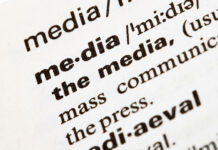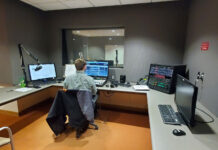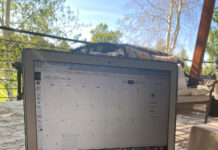
With the rise of Spotify, Pandora, podcasts and other social media apps, consumers are left with an overwhelming amount of content at their fingertips.
Listening to a specific song by a specific artist is as easy as searching through Spotify. But while all of these apps centralize content to give people what they want, they lack a more human connection that radio once provided.
Radio has a long history and a strong influence in the American culture, but a lesser known fact is that radio began as a hobby.
The first voices and music heard over the radio came from Reginald Fessenden in December 1906. He initially broadcasted to anyone who had a radio, which was a luxury at the time.
Then came “The Golden Age of Radio,” circa 1930-1955. During this period, creators connected with their audiences through radio plays, advertisements, and music. Society started embracing this new medium as a mainstream form of entertainment.
It was through these years of radio that listeners really developed a connection and rapport with broadcasters. Not only did audiences listen to the radio for news, but would look to the broadcasters for opinions, and generally they began to become household friends.
Somewhere along the line, however, radio started losing its connection with its listeners.

Scot Singpiel, the radio instructor at Salt Lake Communnity College, comments on how radio has changed over his career in the business.
“In a way, [radio] has changed a lot, and in a way, it hasn’t changed at all,” he says. “I feel it’s the same old topics and conversations, promotions, and it hasn’t evolved … it still has 15-20 minutes of commercials an hour, whereas I could go to YouTube, wait for a minute ad and listen to the song I want.”
Singpiel explains that before the rise in technology, there was only a limited number of spots to host or produce a radio show.
“Now, if you have a lot of talent and a lot of ability and a little bit of luck, you can go put a podcast out. You don’t have to go to a radio host and ask, ‘Can I get a show?’ You can just do it yourself,” he says.
Singpiel says radio has struggled to keep up with changing tastes and formats.
“There’s just so much more personality competing out there. That’s what people are connecting to now as opposed to radio, because I don’t think radio is doing a very good job giving people something to connect to,” he says.
SLCC communication professor Matt Merkel believes consumers still value familiarity in personalities and artists.
“While the intimacy maybe isn’t as direct as it has been in traditional radio, people are still looking for those familiar voices,” he says.
Merkel adds that audiences recognize that whatever they are listening to, they are looking for people they know.
“Although it’s more interspersed now, they are looking for that familiarity,” he says.






